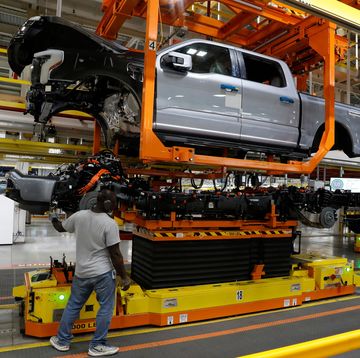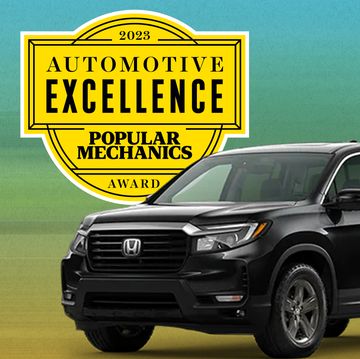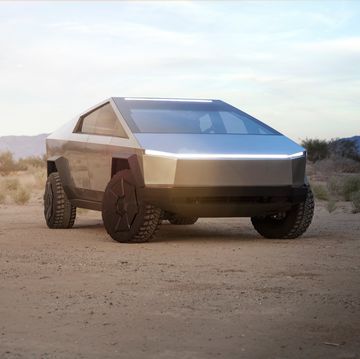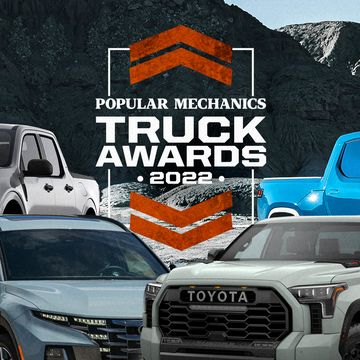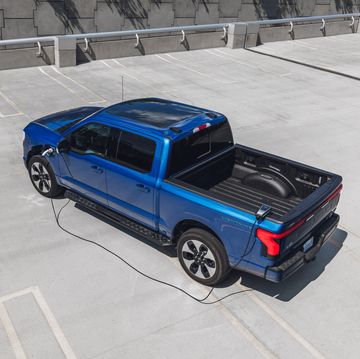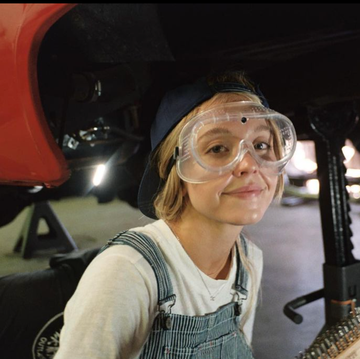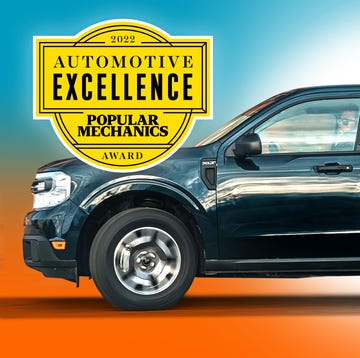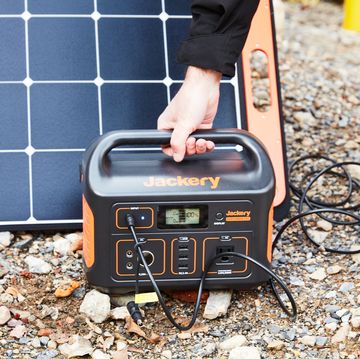Ford made quite the splash at the 2014 Detroit auto show with its all-new F-150 pickup, and a big part of the truck's lightning rod effect can be traced to its nearly all-aluminum construction. The truck's aluminum cab and bed are unprecedented in the full-size pickup segment, and it is the first instance of so much of the lightweight metal being used in such a high-volume product. This has folks asking a lot of questions—and Ford working tirelessly to answer them—mostly about the truck's durability and performance. While we can't fully speak to that topic until we test one for ourselves, we can tell you 10 things about the F-150 we bet you didn't already know:
1. You've Already Seen It
If you watched the 2013 Baja 1000 off-road race, you've already seen the 2015 F-150. Not ringing a bell? Good—that's exactly what Ford was going for. Those tricky devils over in Dearborn looked at the Baja 1000 and thought, boy, would it ever make a good torture test for the 2015 F-150. But they couldn't let people actually see the 2015 F-150. In perhaps the most clever camouflage job ever, Ford stamped a current F-150 body out of aluminum and fitted that to the 2015 model's new chassis, installed the new 2.7-liter EcoBoost V-6, and went racing.
2. When Ford Says It's Aluminum, It Means It
More than 90 percent of the F-150's cab is aluminum, and the bed is entirely aluminum. That's a lot of aluminum. The only notable steel components in the truck are the door latches and hinges, body rivets, mounting studs for fitting bolt-on parts, the cross-door side-impact beams, the majority of the firewall, and, of course, the frame. The steel firewall, by the way, is used because steel has optimal noise, vibration, and harshness–quelling characteristics; Ford's piece uses two bits of steel with a damping material sandwiched between them.
3. It's Ready to Plow . . . Snow
The outgoing F-150 came with electric power steering in every model save those that came with the now-discontinued 6.2-liter V-8 engine. It turns out, this wasn't the ideal setup for guys intent on using their F-150 for plowing snow. Ford actually issued a technical service bulletin for 2011-and-up F-150s with electric power steering that warns against using those models with plows. Essentially, since the EPAS setup already draws a lot of electrical power, adding a plow and requisite electric pump for its hydraulic knickknacks could overload the system and result in a degradation in charging system performance (i.e., electrical stuff will stop working). For 2015, Ford's come up with a new Plow Prep package for F-150s (with EPAS) equipped with the 5.0-liter V-8. The automaker hasn't fully detailed the kit yet, but says it will allow owners to fit a plow and not worry about their electrical system sneezing.
4. That Spoiler Isn't a Spoiler, Well, Sort Of
Look closely at the F-150′s tailgate, and it almost looks as though it's sporting a vestigial ducktail spoiler. Thing is, that metal protrusion stamped into the aluminum tailgate isn't the spoiler. It in fact is just a stylized mounting apparatus for the actual spoiler, which is a super subtle plastic lip that protrudes from the trailing edge of the tailgate. Ford tells us that the spoiler wasn't as effective when it was mounted flush with the face of the tailgate, so engineers extended it a few inches rearward and recorded cleaner wind-tunnel results.
5. Think An Aluminum Pickup Bed Isn't Durable? Think Again
One of the F-150's more surprising features is its fully aluminum bed. Aluminum is a softer and less-dense metal than steel, with a yield strength that's 42 percent lower, and the question on everyone's minds is whether it can handle the abuse pickup beds are subjected to. Ford tells us that the aluminum it uses for the inside of the bed is a thicker gauge than the steel it used to use, resulting not only in a lighter-weight unit, but one with better ding and dent resistance than a steel bed.
6. Sweet Tech, Straight Outta 2007 Toyota
The F-150 will offer a damped tailgate, as many trucks have for some time. Even Ford's approach this time around isn't as new as perhaps the company would like us to believe, as we were told the Blue Oval took its inspiration from the 2007 Toyota Tundra's mechanism, which means the F-150′s tailgate gets both a spring and a gas strut to help smooth its operation.
7. EcoBoost Models Can Haz a Centered Front License Plate?
If you're from a state that requires front license plates, you might be wondering why every EcoBoost-powered F-150 you see wears its front plate offset to one side of the bumper. Well, the plate isn't centered because it would cover a key cooling slot for the engine compartment—but Ford has fixed this for 2015. Thanks to increased engine cooling, Ford is moving the plate back to the center of the bumper, where it lives on non-EcoBoost F-150s. We happen to think offset front plates look kind of cool, but we'll have to get our fix elsewhere now.
8. The Rear Window Is Born from Lasers
One of the F-150's slicker features is its near-flush-fitting sliding rear window. On other pickups equipped with opening rear windows—the outgoing F-150 included—the glass is bisected by a pair of pillars that support the sliding window mechanism. This technology hasn't changed in decades, and while it works, it doesn't look that good. The 2015 F-150's rear window, on the other hand, appears to "float" within the rear glass, thanks to a sliding mechanism mounted inside the truck away from view. The rear window opening is laser cut, and all bystanders see is the window, some weatherstripping, and the sliding window that sits almost flush with the surrounding glass.
9. It Doesn't Just "Bolt Together"
Assembling full aluminum vehicles requires a unique process relative to steel-bodied rides, and the F-150 is no different. Although Ford won't go into specifics about how it builds its new truck, we were able to ascertain generalities about the process. Unsurprisingly, Ford's process of fitting body panels involves a combination of riveting and gluing, as well as some welding.
10. There Won't Be an Unpainted, Bare-Aluminum Model
One of aluminum's more appealing properties, besides being lightweight, is its resistance to corrosion and rust—and looking really cool when left bare and unpainted. Mix these two capabilities together, and you could have one bad-ass-looking unpainted F-150. We of course asked Ford whether it was thinking of such a model, perhaps as a special edition, and were told flat-out "no." That's okay, we can strip paint ourselves . . .
Originally published at Car and Driver

Alexander Stoklosa has been editing, writing, and reviewing cars for Car and Driver since 2010. Occasionally, he takes a subpar photograph or whips together a cheesy illustration, to the chagrin of C/D’s art staff. More often he can be found taking needlessly contrarian positions in inter-office car debates.


